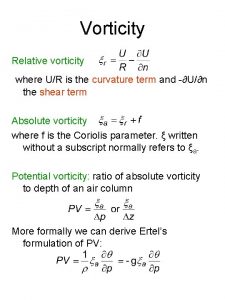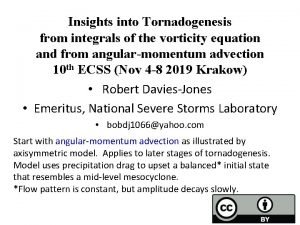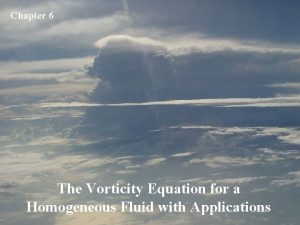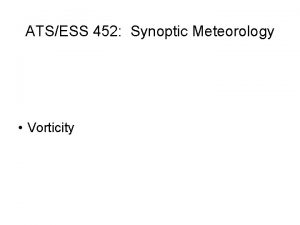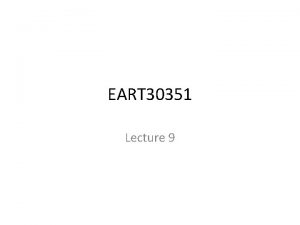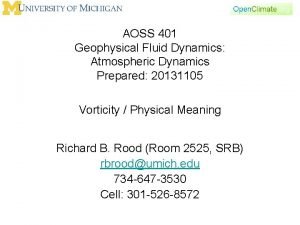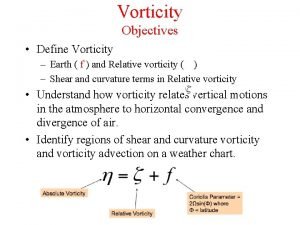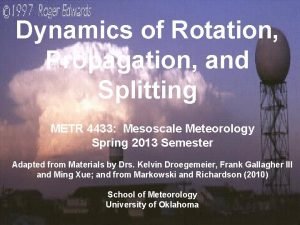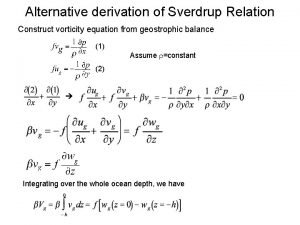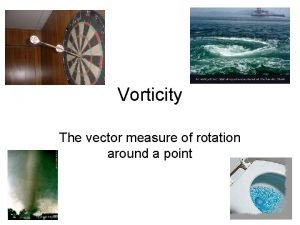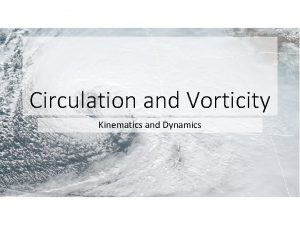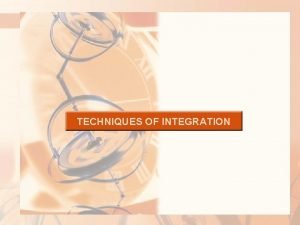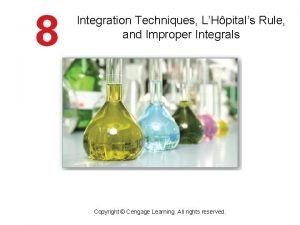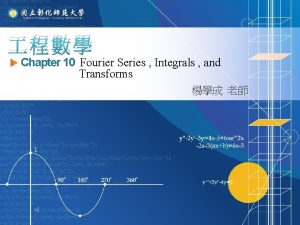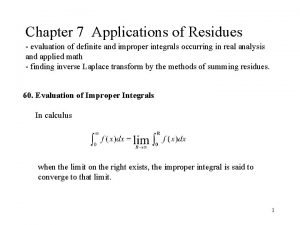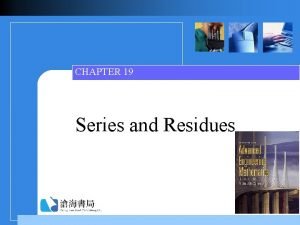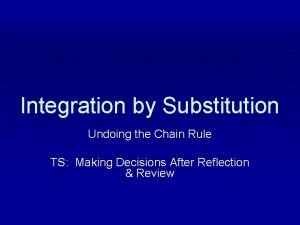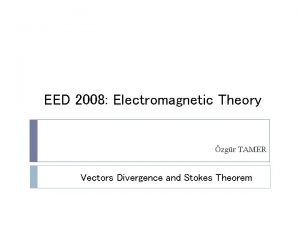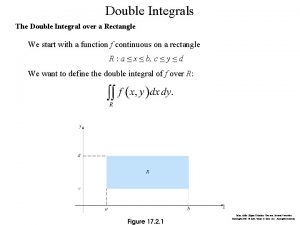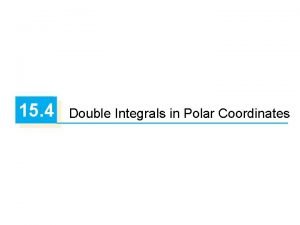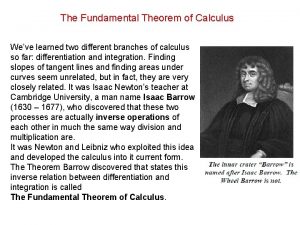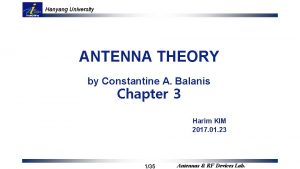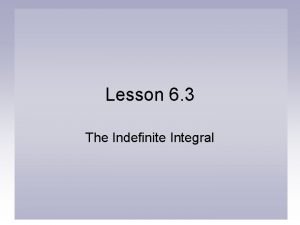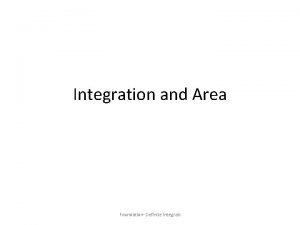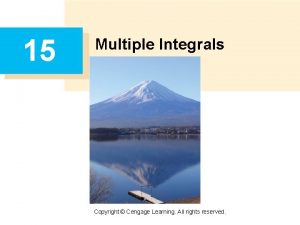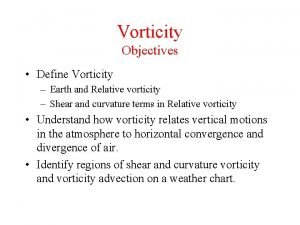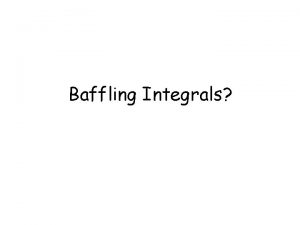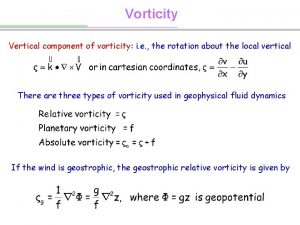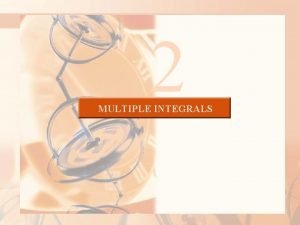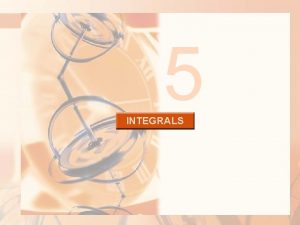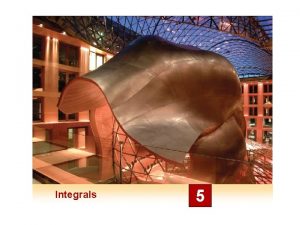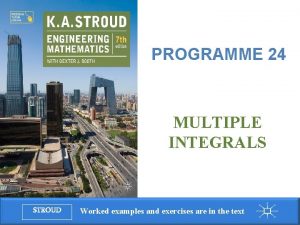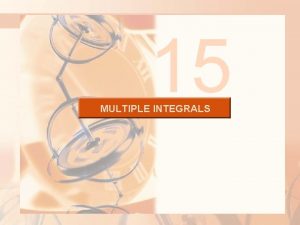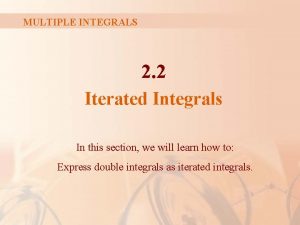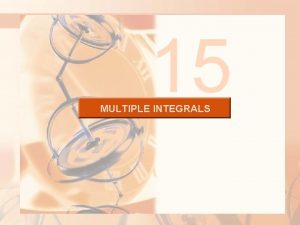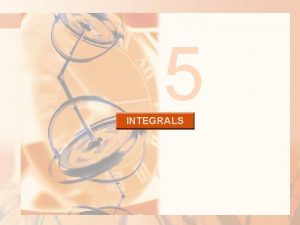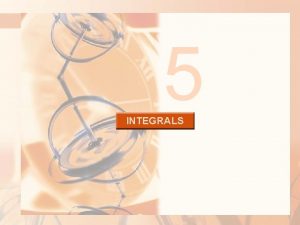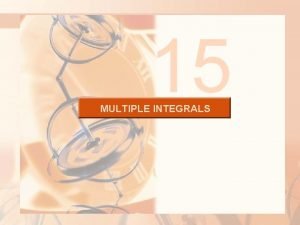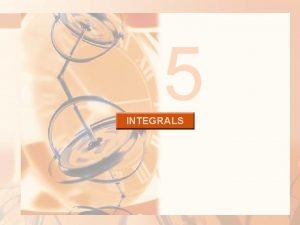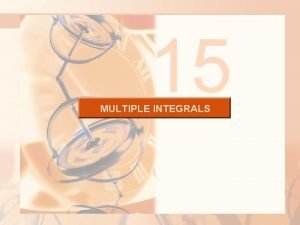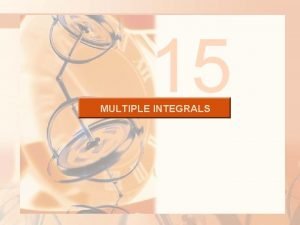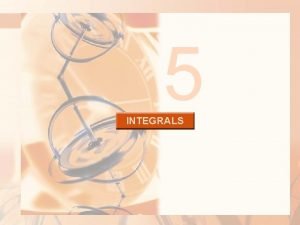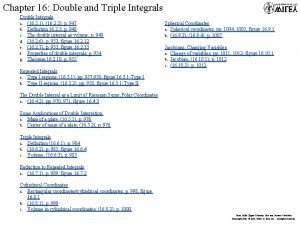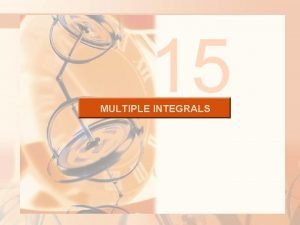Insights into Tornadogenesis from integrals of the vorticity









![[2] Insights into Tornadogenesis from integrals of the vorticity equation • Lagrangian approach • [2] Insights into Tornadogenesis from integrals of the vorticity equation • Lagrangian approach •](https://slidetodoc.com/presentation_image_h/16e035cf349681dc7a239e0795d137f2/image-10.jpg)














- Slides: 24

Insights into Tornadogenesis from integrals of the vorticity equation and from angular-momentum advection 10 th ECSS (Nov 4 -8 2019 Krakow) • Robert Davies-Jones • Emeritus, National Severe Storms Laboratory • bobdj 1066@yahoo. com Start with angular-momentum advection as illustrated by axisymmetric model. Applies to later stages of tornadogenesis. Model uses precipitation drag to upset a balanced* initial state that resembles a mid-level mesocyclone. *Flow pattern is constant, but amplitude decays slowly.

DJ 08 closed domain 12 km Rain dashed contours 1. 5, 3. 5 g/kg Fall at 8 m/s through initial mid-level mesocyclone Rain dropped 0< t<4 w 34 P-4 v 23 Solid contours Stokes streamfunction Ψ Angular momentum (~ conserved) Filled contours decreases w -14 M is also streamfunction for vorticity Initially M & Ψ contours coincide u -11 4. 1 5. 3 Ψ>0, M>0 Ψ=M=0 on boundaries red contours are extra ψ contours (. 001, . 002, . 003) static dots mark initial. 001 &. 004 ψ contours 8. 4 km u, v, w in m/s, p in mb No slip v, no stress u, w

What to look for in animation • Streamer drag upsets balanced (Beltrami) midlevel mesocyclone, enhances downdraft (ED). Tornado forms at t = 5. 4 (~30 min). • M is quasi-conserved so nearly follows trajectories • ED drags M across ψ lines toward lower ψ. Branch of ED outflows in toward axis, dragging M with it (M advection is +ve ) • Low-level air with larger M is then drawn into updraft • Due to upward M advection, updraft rotates faster, pressure falls, • & vortex aloft becomes more cyclostrophic • Owing to extra radial mass influx, ψ changes in corner region. But there is little change at 3 km (opposite to dynamic pipe). Corner streamlines turn vertical from • No slip boundary condition on v turns flow further inward to very near axis • Causes tornado near ground with breakdown into vortex aloft • All rising air near ground is in tornado's high-speed updraft


(30 min) Axial downdraft imminent Axial updraft Wider core ~ cyclostrophic breakdown Axial jet Tornado ζ>0 Clear slot ζ<0 ξ<0 Hook Outflow Tornado is result of downward & inward M transport in presence of ground

• What's missing vorticity-wise in model • • (1) Tilting of environmental vorticity (implicit in initial state) (2) River bend effect (no reorientation of azimuthal vorticity) (3) Baroclinic generation of vorticity that can be tilted Part 2 discusses theory & roles of above in tornadogenesis. (3) (2) Klemp 87 (3 SVC) (1) svc = streamwise vorticity current

But first single Doppler circulation (DJ & Wood) • Circulation is 2π angular momentum for axisymmetry. • In constant-elevation surfaces, computed Dopper circulation around & mean convergence in fixed circles C (1 to 2. 8 km radii) centered on vortices for tornado warning tool. • Because of unobserved wind, actual values 2 x Doppler ones. • Circle averaging removes spurious quadrupole patterns. • Did this for Union City tornado (first TVS)

CIRCULATION vs. RADIUS TVS Range 51 km Height 3. 5 km The circulation & mean convergence are independent of circle radius. Initial mesocyclone had totally contracted into the mature tornado within a broad region of constant convergence. Simulated flow is potential vortex + constant convergence MEAN CONVERGENCE vs RADIUS

Circulation 105 m 2/s agreed with photogrammetrically observed circulation at 200 m AGL. Used radar simulator to change range of the convergent potential vortex. SINGLE CURVE ≤ 20% error for RANGE/RADIUS ≤ 90 (this is worst case: TVS @ midpoint of azimuthal sampling interval) CIRCULATION vs RANGE ÷ RADIUS Circulation is useful because it is quite range insensitive (unlike rotational velocity & shear).
![2 Insights into Tornadogenesis from integrals of the vorticity equation Lagrangian approach [2] Insights into Tornadogenesis from integrals of the vorticity equation • Lagrangian approach •](https://slidetodoc.com/presentation_image_h/16e035cf349681dc7a239e0795d137f2/image-10.jpg)
[2] Insights into Tornadogenesis from integrals of the vorticity equation • Lagrangian approach • Theory only as yet, model diagnostics later? • Follows Dahl et al. (2014) but for baroclinic & frictional vorticity as well as barotropic • Uniform parcel stencil in environment • Arms (τ is time) are material “elastic strings” that stretch and turn. • The strings (covariant basis vectors) are frozen in the fluid.

Initial strings are unit eastward, northward, upward vectors, τ 0 is initial time Parcel P green Stencil parcels red Initial grid volume is tiny cube. It is static in XYZ-space d. X=d. Y=d. Z

At later time τ, material volume is parallelepiped of same mass Lagrangian continuity (mass conservation) equation: = specific volume/ initial value

Vector rules:

• For any force F

• Lagrangian w-equation (w = αω): Note that ei & linear combinations thereof are solutions of the barotropic w-equation Rotate X & Y axes so that in each material Z-surface, e'1 & e'2 are parallel to & 90° left of storm-relative environmental wind. Subscript 0 denotes initial/environment, ' denotes rotated system. Solution that satifies BCs is

• q 0 & β 0 are storm-relative environmental wind speed, direction. • Weights of w. BT are static (Dahl et al. 2014). • They are the imported storm-relative streamwise vorticity & crosswise vorticity. Barotropic vertical vorticity Like DJ 84, Rotunno & Klemp (1985) (semi-)linear formulas, but fully nonlinear (X', Y' replaces x', y').

Baroclinic vorticity integral w-equation becomes Integrating with zero initial condition gives Weights accumulate over time. Can compute w. BC from time integral of b, z material solenoids at stencil points, & current strings. Timing of generation immaterial.

• • • Need reversible trajectory scheme (symmetric in time) Map buoyancy & height of parcels onto bz-plane. Each Jacobian is ratio of algebraic (signed) areas (DJ 01). = area in (b, z) plane ÷ area of face of initial stencil Area of square (face of cube) is static, = 2 (d. X)2 in each case Values arbitrary!

• Storm reaches steady state • Parcels now follow streamlines. • Can now solve for wind (by truism!): in order to satisfy the initial condition v(τ0) = q 0 e'1(τ0). The weight (contravariant component) of the wind is now q 0. Define new orthonormal basis vectors t, n, b in streamwise, transverse, and binormal (normal to Z-surface) directions. v = qt, q wind speed.

Transverse & streamwise vorticity in steady isentropic flow where R = ratio of environmental to current streamline spacing, S(Z) is entropy, d. S/d. Z (< 0) is the environmental stratification, d. Z/db = ratio of environmental to current spacing of Z-surfaces, ϕ is angle between e 2 and e 1 (or t). Term A is stretched environmental streamwise vorticity Term B is time integral of streamwise baroclinic vorticity generation Term C is river-bend effect

DJ+01 RIVER BEND EFFECT Graf & Blanckaert 2002 Low BA = e'1 is along streamline, DC= e'2 is left normal initially. Flow speed increases with height. Vorticity upstream is transverse. The binormal vorticity is zero so ABCD does not rotate as a solid body. Instead anticyclonic (ac) shear curvature cancels cyclonic curvature vorticity & e'2 rotates towards e'1. The faster (slower) fluid at top (bottom) moves outward (inward) due to excess centrifugal force (pressure-gradient force).

VORTICITY FOR UPDRAFT ROTATION DJ 84 Fujita 59 Inflow parcels have lots of low-level 3 D barotropic stormrelative streamwise vorticity. Amplified by streamwise stretching, they flow into the base of the storm updraft. Result is updraft rotation & low pressure at quite low levels. Parcels in "streamwise vorticity current" along forward flank downdraft boundary get baroclinic streamwise vorticity owing to being in a transverse buoyancy gradient. Rotation locally enhanced where these parcels enter updraft.

VORTICITY CLOSE TO GROUND Parcel enters downdraft. Its front side is heavier than its rear. Gets +ve transverse baroclinic vorticity. Mesocyclone's radial pressure-gradient turns parcel to left. In left-turning flow (outside mesocyclone core), parcel gets 3 D streamwise vorticity from +ve transverse vorticity through river-bend effect. As parcel exits left side of RFD & flows towards updraft, its 3 D streamwise vorticity grows due to streamwise stretching (& by continuity isentrope packing & streamline confluence). Vortex suction lifts cool parcel into updraft. Upward tilting & vertical stretching of its 3 D streamwise vorticity maintains tornado.

• SUMMARY OF VORTICITY DIAGNOSTICS: • The strings (covariant basis vectors) e'1, e'2, and e 3 are material line elements attached to each parcel. • Initially they are orthonormal. In a horizontally homogeneous environment e'1&e'2 are parallel & left normal to the stormrelative environmental wind, e 3 is upward. • The initially level Z-surfaces are material surfaces, within which initially streamwise and crosswise unit material lines e'1& e'2 are reoriented and stretched or diminished. • Barotropic-vorticity weights are static (initial streamwise & crosswise vorticity). Baroclinic-vorticity weights grow. • The strings propagate a parcel’s vorticity through time by factoring in the “frozen field” effect. • ‘River-bend’ effect is due to e'2 rotating towards e'1 in leftturning flow & producing 3 D streamwise vorticity from both barotropic & baroclinic transverse vorticity.
 What is relative vorticity
What is relative vorticity Streamwise vorticity
Streamwise vorticity Vorticity formula
Vorticity formula What is vorticity in meteorology
What is vorticity in meteorology Vorticity formula
Vorticity formula Vertical meaning
Vertical meaning Earth vorticity
Earth vorticity Streamwise vorticity
Streamwise vorticity Sverdrup relation
Sverdrup relation Absolute vorticity
Absolute vorticity Circulation and vorticity
Circulation and vorticity Tetdt
Tetdt Integrals involving powers of secant and tangent
Integrals involving powers of secant and tangent Complex fourier series
Complex fourier series Application of residue theorem to evaluate real integrals
Application of residue theorem to evaluate real integrals Simple pole
Simple pole Rule for integration
Rule for integration Curl in cylindrical coordinates
Curl in cylindrical coordinates Double integrals over rectangles
Double integrals over rectangles Polar integrals
Polar integrals Second fundamental theorem of calculus
Second fundamental theorem of calculus Duality theorem in antenna
Duality theorem in antenna Properties of indefinite integrals
Properties of indefinite integrals Is integral the area under a curve
Is integral the area under a curve Properties of double integrals
Properties of double integrals
